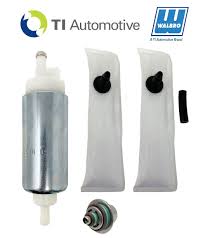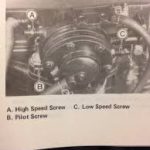Understanding the Need for a Larger Barb Fuel Pump Replacement
The Vegas fuel pump replacement larger barb is known for its solid performance and reliability, but when you start making engine modifications or pushing the bike harder than stock settings, the stock fuel delivery system can become a bottleneck. One common restriction point is the fuel pump’s outlet barb — the small metal or plastic fitting where the fuel line attaches.
A larger barb increases the diameter of the fuel flow path, allowing more fuel to reach the injectors without excessive pressure drop. This is particularly beneficial if you’ve installed high-flow injectors, upgraded your exhaust system, or had your ECU tuned for higher performance. In these cases, the stock fuel pump may struggle to keep up, leading to lean running conditions at high RPMs, which can damage your engine over time.
Switching to a fuel pump with a larger barb is not just about raw performance — it’s also about long-term reliability and consistent fuel delivery under all riding conditions.
Tools, Materials, and Preparation
Upgrading your fuel pump isn’t as simple as swapping one part for another — it requires preparation to ensure safety, compatibility, and a leak-free installation.
Essential Tools for the Job
-
Socket set and ratchet for removing the fuel tank bolts
-
Fuel line disconnect tool for quick and clean hose removal
-
Hose clamps matched to your new barb size
-
Flathead and Phillips screwdrivers for general disassembly
-
Torque wrench for reinstalling components to spec
Materials and Parts Needed
-
Replacement fuel pump with the correct larger barb diameter
-
High-pressure fuel hose compatible with modern ethanol-blended fuels
-
OEM-spec or upgraded fuel filter
-
Fuel-safe thread sealant if required by the pump manufacturer
-
New O-rings and gaskets to prevent leaks after reassembly
Safety Preparations
Working around fuel means working with flammable liquids and vapors — safety should always be your first concern.
-
Work in a well-ventilated area with no open flames or sparks nearby
-
Wear gloves and eye protection
-
Relieve the fuel system pressure before disconnecting lines to avoid spray
-
Keep a fire extinguisher nearby for emergencies
Step-by-Step Fuel Pump Replacement Procedure
Replacing the fuel pump on a Vegas is straightforward if you follow the correct sequence and take your time.
Step 1: Relieve Fuel Pressure and Disconnect Battery
Start by turning off the ignition and disconnecting the negative battery cable. Locate the fuel system’s pressure relief point — often a Schrader valve — and depress it carefully to release any built-up fuel pressure. This prevents fuel from spraying when you disconnect lines.
Step 2: Remove the Fuel Tank
Unbolt the tank mounting points using your socket set. Gently lift the tank, disconnecting all electrical connectors and fuel lines leading to the pump assembly. Keep track of each connection so reassembly is easier.
Step 3: Extract the Old Pump
Locate the fuel pump module, usually secured with a retaining ring or bolts. Remove these fasteners, then carefully lift the pump assembly from the tank, making sure not to damage the float arm for the fuel gauge. Inspect all seals and note their positions.
Step 4: Install the New Pump with Larger Barb
Swap the old pump for the new one, ensuring that the larger barb is positioned for smooth fuel line routing. Attach a high-pressure hose that matches the barb size, and secure it with fuel-rated clamps — never standard hardware store clamps, as they can cut into the hose.
Step 5: Reassemble and Test
Reinstall the pump assembly into the tank with fresh O-rings. Bolt the tank back onto the frame, reconnect all electrical connectors, and reattach the fuel lines. Once reassembled, turn the ignition key to the “On” position without starting the engine. This primes the fuel system. Check for leaks before taking the bike for a ride.
Common Issues and Troubleshooting
Even a careful installation can run into minor hiccups — here’s what to watch for.
Fuel Line Fitment Problems
A larger barb means a larger hose is required. Make sure your replacement hose has the correct inner diameter and is rated for high-pressure fuel injection systems.
Leaks at the Barb Connection
Leaks are often caused by hoses that aren’t fully seated on the barb or clamps that are too loose. Reposition the clamp about 3mm from the hose end and tighten securely without over-crushing the hose.
Electrical Connector Mismatch
Some aftermarket pumps have different electrical connectors. In these cases, you may need a plug adapter or minor wiring modification to ensure compatibility.
Performance Benefits After the Upgrade
Once your Vegas fuel pump upgrade is complete, the difference is noticeable — especially if your bike is tuned for performance. You’ll likely experience:
-
Improved fuel flow at high RPMs
-
More stable fuel pressure, reducing lean spots
-
Better throttle response under acceleration
-
Increased reliability for long-distance or high-speed riding
This upgrade ensures that your fuel system can keep up with engine demands, making it a worthwhile investment for both stock and modified bikes.








